The Eternal War
Galaxy Wars, released by Universal in 1979, is one of the first wave of "proper" arcade videogames (defined here as coded on ROM chips rather than being semi-mechanical or solid-state like Pong).
Running on a hacked Space Invaders board (as most of the first wave did), it actually bears a lot of similarities to Taito's 1978 blockbuster. It's got UFOs running across the top of the screen, above a field of asteroids which move one way across the screen, then drop down a level when they reach the edge and start moving back across in the opposite direction.
The screen was a monochrome reflector – sometimes supplemented by sheets of coloured cellophane to mimic a colour display – and all the sound effects are ripped straight from Invaders.
It was a pretty dull game, and other than an inexplicable Japan-only SNES port in 1995 (which seems to have been the only ever licenced home version on any format) it made very little impact on posterity.
Until this week, when it suddenly threatened to become mildly interesting.
A thing I like to do to relax is mess around with my Raspberry Pi, and more specifically its installation of the incredible multi-emulation platform Retropie. I've spent hundreds of hours curating my setup into a definitive gaming museum, with nice artwork on all the game lists, and sometimes that means making my own box art for homebrew games or ones that nobody's preserved a box for.
Below, for example, are ones I mocked up for the brilliant recent Spectrum ports of Kung-Fu Master (as Mister Kung-Fu) and New Rally-X (as Maze Death Rally X), both of which were pleasingly adopted by the games' authors as the "official" box art.
A rich seam of material for such things are the flyers for the original arcade games, and so it proved this week when I knocked up a couple of quick covers for homebrew ports of Galaxy Wars, on the Speccy and obscure Japanese micro the Sharp X-68000.
While digging out the Galaxy Wars flyers ("BIG SCREEN & FANTASTIC ACOUSTIC EFFECT EXPANDING YOUR INTEREST!!"), I came across something that tickled me.
Universal had made a major selling point out of the exciting feature that the game, um, occasionally displayed words on the screen. So with an evening to kill (and a cheat mode enabled), I decided to see them all for myself. The first four took a while, but showed up in due order.
So far so not very interesting. But the final message, "GIVE UP !!", offered up a tantalising prospect. It rather suggested that the game could be beaten, and if so would almost certainly be the first arcade game ever to have an end.
(Early coin-ops just went on forever – unless stopped by bugs in the code, as with Pac-Man and Donkey Kong – leading to incredible endurance feats of people playing a single credit for literally days, before arcade operators wised up that this sort of thing wasn't making them any money. Nowadays a game like Mario Kart Arcade GP not only has an end, but you have to pay for the next race even if you win the previous one, making even a "perfect" completion cost over £120 at £1 a credit.)
At that point, Galaxy Wars turned from "pretty dull" to sheer purgatory. It starts off boringly easy, with just five asteroids onscreen obstructing the path of your missile to the enemy UFOs.
The space rocks move in a fixed pattern. All the ones moving from left to right do so at a uniform speed, taking about 13 seconds to traverse the screen. The ones moving from right to left also all move at a uniform speed, but a much slower one – about a quarter as fast, taking around 52 seconds for the journey.
(This creates quite an effective illusion of chaos for very few bytes of code.)
With every wave you clear, an extra asteroid is added, up to a maximum of 32.
This makes the game harder, which is fair enough, but after a brief period of enjoyable challenge at around 15-20 asteroids it also rapidly makes it agonisingly tedious to endure, because of a surprise intervention from Galactic Health & Safety.
The bottom level of meteors is low enough to ram into your missile while it sits on its mobile launchpad. So in the same way as in the actual game of Asteroids, the CPU won't bring your new missile into existence after you lose one (either by dying or wiping out a UFO) until it judges that it's safe to do so without it getting immediately crumped by a space rock.
And it interprets that rule very conservatively, to the point where it needs a gap between asteroids that's almost 40% of the width of the screen.
Universal had probably never anticipated anyone making it to the game's maximum difficulty, because with 32 asteroids onscreen, and the twin-speed movement pattern, what happens is that you can have to wait for an eternity before Galaxy Wars feels it's safe to let you play. The longest gap I timed from the explosion of one missile to the materialisation of the next was 1m 54s.
(This is because the bottom level moves right to left, and hence very slowly. Meanwhile rocks from the level above, going four times as fast, catch up with the slow-moving bottom level and close up the gaps before you can get a missile in. The problem would have been far less acute if the bottom row had been a fast row.)
I'd kind of hoped that there'd only be one 32-asteroid level and then you'd win. That'd have meant 27 stages all told, which seemed to fit fairly reasonably with the 3-7-10-15 sequence of the first four messages, and would still mean a demanding 12 tough levels from "FANTASTIC !!" to "GIVE UP !!".
But no. Five increasingly-painful hours in, I'd beaten several 32-rock screens with no end in sight. And thenI had a look on Wikipedia and got a cold chill.
Fortunately, as with so much videogame information on Wikipedia, this turned out to be complete rubbish. Dying with a score of 0 just gets you a straight "GAME OVER". I even tried losing all my missiles on the launchpad without getting any of them airborne, but the result was the same.
So it MIGHT still be the case that we've discovered the first ever finite arcade game. As I write this, I'm another couple of hours into 32-asteroid stages with no sign of an ending. But since everything else on the flyer has proved to be true, there's no reason to believe that the dastardly aliens won't surrender eventually.
The really scary thing, though, is that even after all these levels I'm only on 88,750 points, and the flyer claims a scoreboard going all the way up to a million.
It now takes roughly half an hour to clear a single screen (with a couple of minutes between missiles, eight UFOs to down and multiple attempts needed for each one, because with 32 asteroids onscreen the game is incredibly hard), and if I'm going to need another 900,000 points then at a maximum of around 4,000 a stage – on later levels more realistically under 2,000 – we could be here for a while.
If I should die, readers, someone come round and take over my save state. The aliens only win if we GIVE UP !! before they do.
.
[EDIT: The "GIVE UP !!" screen appeared a few levels later. The game continued afterwards, slightly disappointingly.]
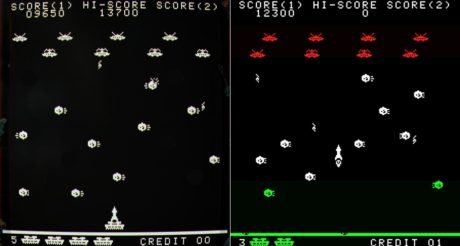


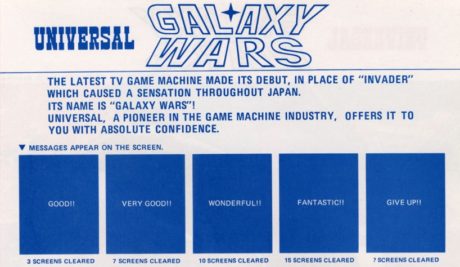
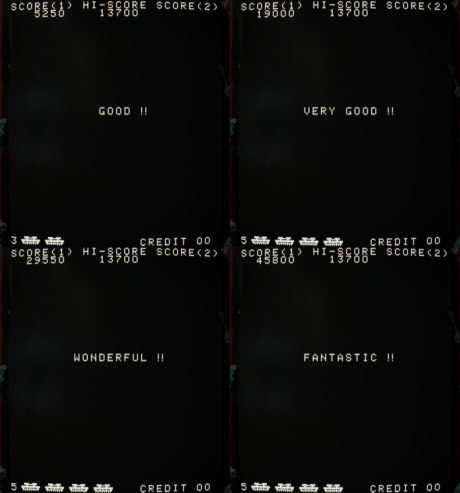
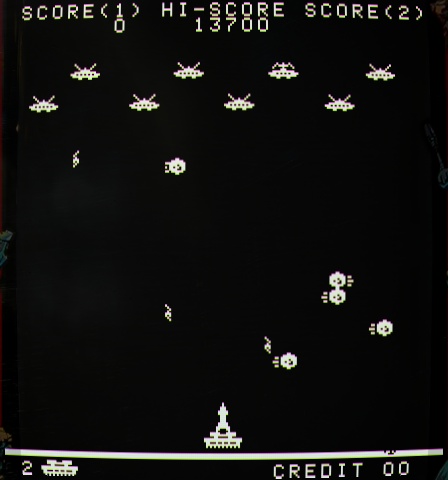
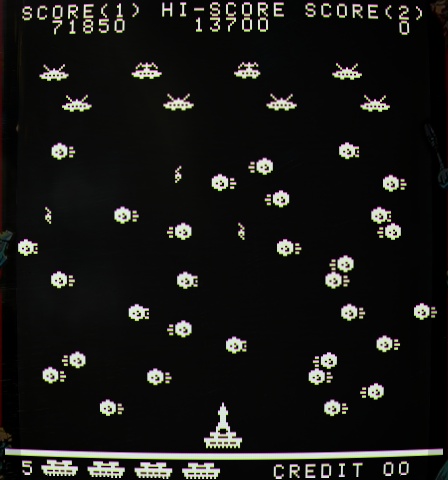
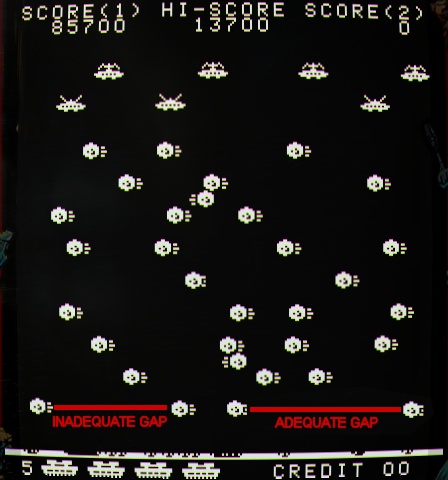
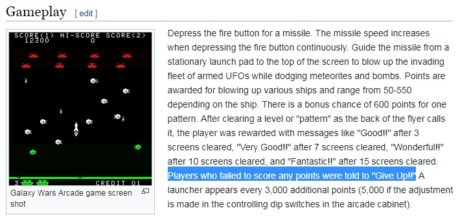
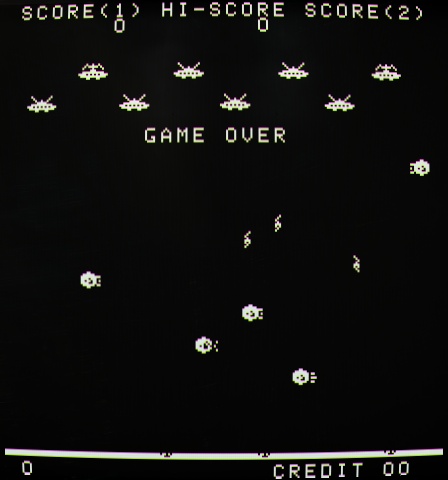
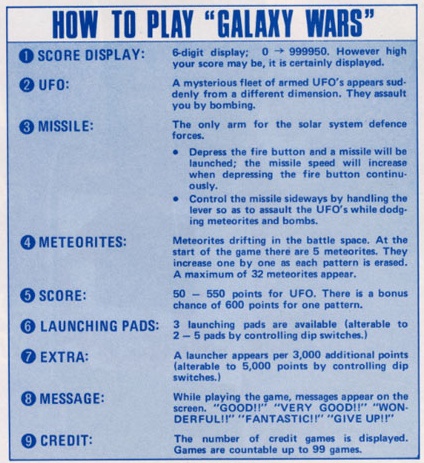








I'm always cheered up when I see my WoS RSS feed ping. I hope we get a weekly report on your progress here, Stu.
Hey, have you played Earth Defense Force 5, yet?